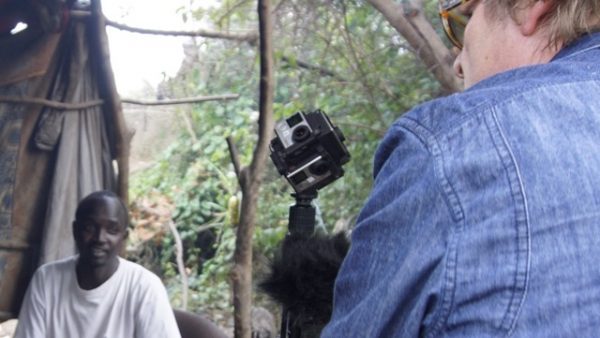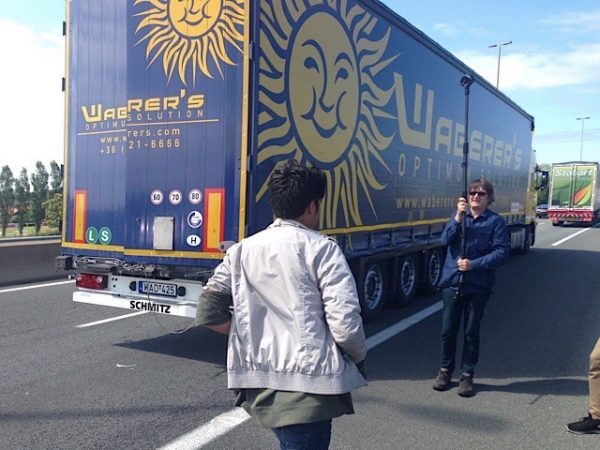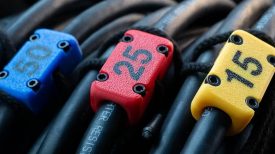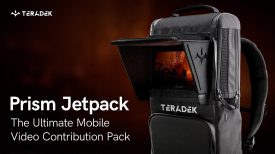The BBC have always had a strong tradition of cutting-edge experimentation, and one of the technologies they are looking at in 2015 is immersive, 360 degree video. The piece embedded above was shot in Calais, where huge numbers of migrants are camped out, waiting for a chance to climb aboard a lorry and cross the Channel from France to the UK. It’s designed to be viewed in VR using goggles like Google Cardboard as well as on the web (although sadly YouTube’s player doesn’t seem to work in Apple’s Safari browser so try it in Firefox or Chrome instead). The piece was produced by Paul Adams, Alice Doyard, Peter Boyd Maclean, Peter Passmore and Zillah Watson; Newsshooter caught up with the BBC’s R&D editor Zillah Watson to find out more about the project.
What made you think this story was right for this particular treatment?
Audiences can feel part of the story when they watch 360 degree footage through a VR headset – they can see and feel what it’s like to be there.
We hoped being able to look around the Calais migrant camp and see the conditions would add a human angle to a complex story. We’d be able to put the audience in the shoes of the reporter. They’d be able to see the camp, and understand the impact on the French families living next to it. Have a look at this blog for more.
How was it shot – was the kit off-the-shelf or custom-made?
We used the the Freedom 360 mount with 6 Hero 4 black cameras at 80fps at 4k.

How is the final product best viewed? Can you view it anywhere? What does it add for an end user?
At the moment you can watch it as a 360 video on YouTube in a browser using your mouse. But it’s best viewed on a phone in the YouTube app – either in Google Cardboard (or similar) or using your phone to change the angle and look around.
Were the cameras used by regular staff or was it a special crew?
It was a special crew – filming 360 is not a simple process yet.
Can you create regular HD content from the 360 view that’s good enough to air normally?
The positions of the cameras makes this difficult at the moment. Also you would probably place the camera in a different place for a conventional shoot.
How far is the technology from being streamable live? What would you need to do a live experiential link?
The possibility of live streaming for sports, news and events is generating huge interest in the industry. BBC R&D demonstrated a live stream to an Oculus Rift from the Commonwealth Games last year.
At the moment it’s possible, but requires a lot of data.
How did the technology affect the storytelling of the piece? Is it still linear?
Most 360 video for VR is currently ‘look around linear’ (For example, Clouds Over Sidra, which won the Sheffield Documentary Festival).
Often the narrative is driven by the audio. The video needs to allow people to look around and absorb the scene.
It requires a different approach to storytelling and we’ve only just started on that journey.

I worked with Condition One footage a few years ago and the way to shoot for that seemed to be to just roll and not worry too much about shot selection. Is that similar to your process? If so does it take some of the craft out of news camera work?
No. We’ve been filming at a low shooting ratio because the data accumulated by 6 cameras is so huge that uploading the footage is very slow. The footage then has to be stitched together to create a panorama before editing. With 360 footage, you don’t have establishing shots, cutaways or close-ups. So you have to think very carefully about where to put the camera to tell your story. The closest analogy is to shooting on film, where the costs for documentaries demanded a low shooting ratio. Therefore you had to plan your sequences to avoid waste.
Was this a one-off or will you do more? What did you learn from this initial story?
This story proved that the technology isn’t quite ready for breaking news – making sure six GoPros are switched on when you are dodging CS gas isn’t easy. And the footage takes too long to process and edit for now. But that’s all going to improve because the technology is developing fast. We’ve proved that you can bring back compelling footage allowing you to see what life in a Calais migrant camp is like, and also the impact on the French people living near the camp. And we’ve done so on a very limited budget. The technology is good enough to work out how to tell stories in 360, and we want to continue experimenting.
And finally: Is this… (drumroll please) the Future Of News?
360/VR news experiences will become an important way to tell some stories in the future – whether it’s coverage of live events that enables you to feel as though you are there, or short immersive experiences to watch on your phone with a mobile viewer to help you connect with a foreign news story. And just as television news and current affairs formats were invented in the 1950s, we now have an opportunity to reinvent news for mobile. VR can turn your phone from a small TV into an intense immersive experience – that’s got to be explored as part of the future of news.





